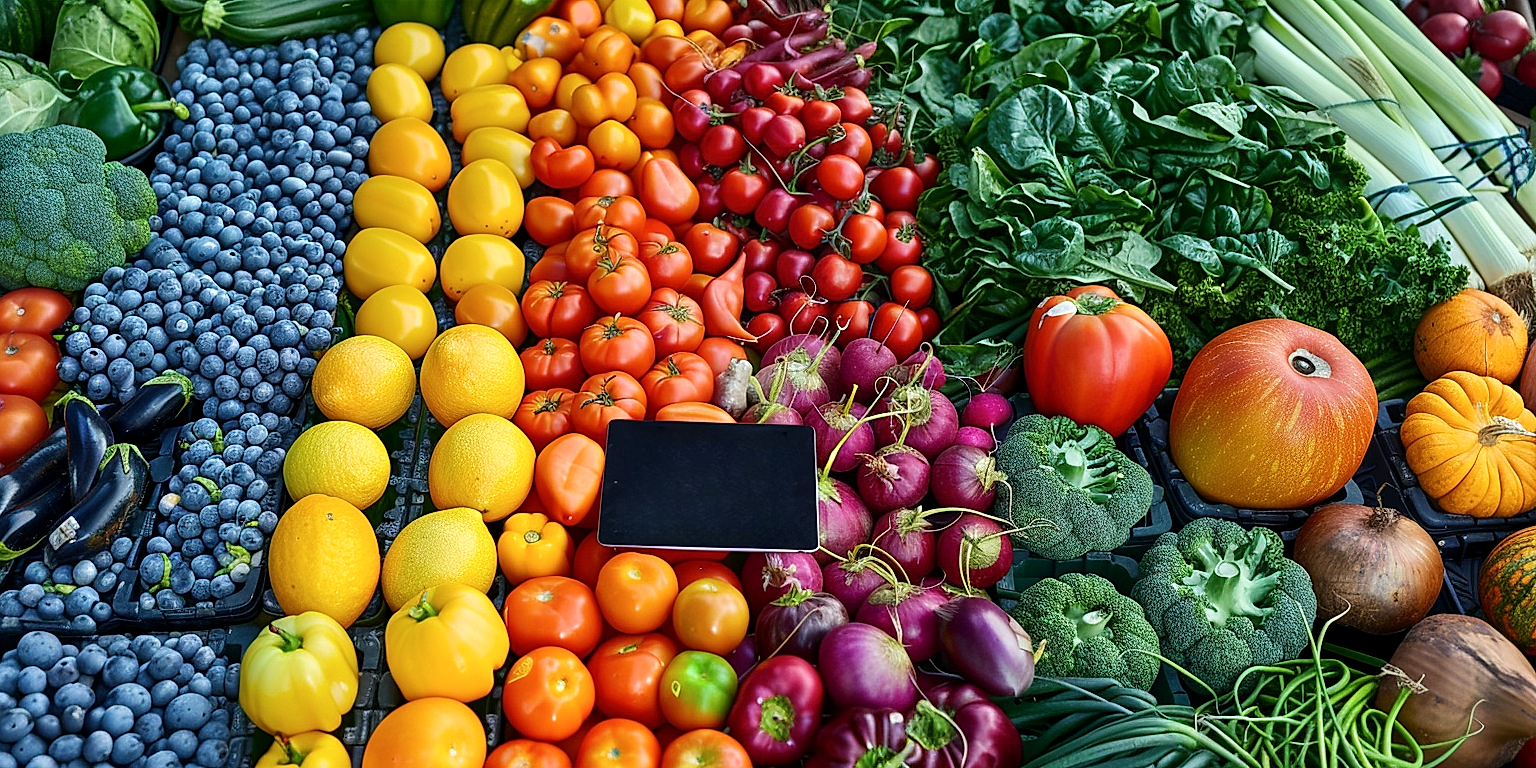The world of logistics is complex, and in no area more so than in the transportation of fresh produce.
This is an industry fraught with uncertainties and challenges, dominated by the unforgiving realities of nature and the constant need for speed and efficiency.
Each ship, truck, and plane plays a complex balancing act, ensuring produce arrives at its destination fresh and ready for sale.
Failure in any part of this logistical chain can lead to substantial financial losses and damaged business reputations.
However, amidst these difficulties, there also exist opportunities for innovation and improvement.
This article will explore the specific challenges faced in produce shipping logistics, alongside potential solutions and strategies for success.
Contents
- Challenges In Produce Shipping Logistics & Solutions
- 1. Challenge: High spoilage rate. Solution: Advanced temperature control techniques{{DOT}}
- 2. Challenge: Delayed Deliveries. Solution: Optimized Routing and Scheduling{{DOT}}
- 3. Challenge: Lack of transparency. Solution: Implement track and trace systems{{DOT}}
- 4. Challenge: High Shipping Costs. Solution: Consolidation and Improved Load Planning{{DOT}}
- 5. Challenge: Uncertain demand. Solution: Advanced forecasting and supply chain modeling{{DOT}}
- The Bottom Line
Challenges In Produce Shipping Logistics & Solutions
1. Challenge: High spoilage rate. Solution: Advanced temperature control techniques{{DOT}}
Perishable goods pose a significant challenge in shipping logistics because of their high spoilage rate.
These types of goods can easily go bad due to changes in the environment from the point of harvesting to the delivery point.
Such factors include temperature variation, humidity, exposure to sunlight, among others.
A high spoilage rate results in wasted resources, increased costs and ultimately diminished profits.
Thus, to mitigate these losses, there is a need for advanced temperature control techniques in the shipping and storage of such goods.
Advanced temperature control techniques are essential in maintaining the quality of the produce while they’re in transit and subsequently reduce the high spoilage rate.
Sophisticated refrigeration systems can regulate the temperature within transport containers to maintain optimal conditions for the goods.
Other techniques such as thermal insulation can maintain a consistent temperature even in the face of external temperature fluctuations.
Secondly, there are temperature monitoring systems that track and make immediate adjustments when temperatures deviate from the ideal range.
These systems can work hand-in-hand with humidity control systems, which manage the moisture content within the cargo compartments.
Moreover, the delivery vehicles can be designed with temperature control features that maintain the quality of the product regardless of the external environmental conditions.
Automation in implementing these techniques improves accuracy and effectiveness, ensuring high-quality produce gets to the market.
This, in turn, reduces the amount of produce that would have otherwise been lost to spoilage, hence the overall spoilage rate drops significantly.
The end result is enhanced profitability margins for the traders.
Ultimately, the implementation of advanced temperature control techniques can transform the challenges posed by perishable goods in shipping logistics through the reduction of spoilage rates.
It creates a sustainable system of managing produce from the farms to the final consumer, ensuring efficiency, profitability, and customer satisfaction.
2. Challenge: Delayed Deliveries. Solution: Optimized Routing and Scheduling{{DOT}}
In the realm of produce shipping logistics, one of the major challenges that many operational managers face is the issue of delayed deliveries.
This problem often arises due to unpredictable traffic, poor route planning, driver’s errors, vehicle breakdowns, and other related factors.
The consequence of these delayed deliveries not only harms the relationship with clients but also affects the overall efficiency of the supply chain.
Moreover, in the case of perishable goods like fruits and vegetables, these delays may even result in significant product spoilage thereby creating additional financial burdens.
For a well-functioning supply chain in the produce industry, timeliness in delivery is a non-negotiable imperative.
Fortunately, there is a solution to this problem which is anchored on the principles of optimized routing and scheduling.
Optimized routing is a system where the best and most efficient routes are determined using algorithms and real-time data.
This does not only refer to the shortest path but it also takes into consideration traffic patterns, weather conditions, and other possible disruptions.
Meanwhile, effective scheduling allows drivers to have a clear and detailed plan of their deliveries, ensuring that they know exactly what time they are supposed to be at a certain location.
These two components when combined, offer a robust solution to the challenge of delayed deliveries.
Through the use of modern technologies such as geo-fencing, GPS tracking, and cloud computing, optimized routing and scheduling can be an attainable reality.
The implementation of this solution requires minimal human intervention, decreases the likelihood of human errors, and promotes timely deliveries.
This in turn, improves customer satisfaction and loyalty, and ultimately increases the overall profitability of the business.
However, it is important to note that while this solution offers a lot of advantages, it also requires significant investment in terms of resources and training.
Nevertheless, the long-term benefits certainly outweigh the initial cost, making optimized routing and scheduling a viable solution to the challenge of delayed deliveries in produce shipping logistics.
3. Challenge: Lack of transparency. Solution: Implement track and trace systems{{DOT}}
The challenge of the lack of transparency is a pervasive issue that has been encountered in produce shipping logistics.
Oftentimes, the stakeholders involved in the shipping process, from the farmers who grow the produce to the customers who consume them, have limited visibility on the status and location of the shipments.
This lack of transparency can lead to many potential problems within the whole supply chain.
Without proper visibility, it is difficult to hold accountable any party responsible for shipment delays or damages.
Moreover, the lack of transparency can also lead to inefficiencies and weak decision making as information gaps prevent effective planning and execution of shipping operations.
Thus, to solve this challenge, the implementation of track and trace systems should be seriously considered.
A track and trace system provides real-time updates on the status and location of shipments.
It uses advanced technologies like IoT and blockchain to offer complete transparency of the produce shipping process.
Through the track and trace system, everyone involved in the supply chain gets visibility into the whereabouts of the shipments, thereby eliminating the ambiguity surrounding their status.
Implementing a comprehensive and reliable track and trace system can greatly improve accountability in the shipping process.
With all stakeholders having access to real-time shipment data, it is easier to identify and resolve shipment issues promptly and accurately.
Besides, the data collected by the track and trace systems can be leveraged for shipping process optimisation, thus leading to improved operational efficiency and reduced costs.
Overall, implementing track and trace systems is a fundamental solution to the challenge of a lack of transparency in produce shipping logistics.
However, it is essential to acknowledge that the successful implementation of these systems requires technical expertise and strategic planning.
All in all, to overcome the transparency challenge, the logistics industry needs to embrace advances in technologies and strive for greater openness and collaboration.
4. Challenge: High Shipping Costs. Solution: Consolidation and Improved Load Planning{{DOT}}
One of the most significant challenges in the logistics of shipping produce is dealing with high cost.
These costs can greatly impact the profit margins for both farmers and retail food businesses.
Therefore, it’s essential for all stakeholders in the supply chain to identify methods of reducing these shipping expenses.
A viable solution to this challenge is implementing a strategy of load consolidation and improved load planning.
Consolidation refers to the practice of combining smaller shipments that are going to the same location into one larger shipment.
This approach increases efficiency and greatly reduces shipping costs because the cost per unit to ship decreases as the load size increases.
Furthermore, consolidated shipments reduce the number of trips needed, which serves to decrease fuel consumption and further cut costs.
Load consolidation and improved load planning greatly reduce shipping costs by increasing efficiency and reducing the number of trips needed.
On the other hand, improved load planning involves strategically packing and organizing the shipment to optimize the use of space.
Shipments must be organized in a manner that minimizes damage to the produce during transit, maximizes the use of space within the shipping container, and facilitates easy and quick unloading at the destination.
To achieve effective load planning, businesses can leverage technology solutions such as load planning software.
These tools aid in drawing up the most efficient plans for loading the shipment, taking into account the dimensions and weight of the produce to be shipped.
Over time, these load planning efficiencies can compound to significantly cut down on overall shipping costs.
In addition, consolidation and improved load planning not just reduce costs, but also contribute to sustainable and eco-friendly shipping practices by reducing fuel consumption and emissions.
Hence, businesses can simultaneously achieve cost-efficiency and contribute to their corporate social responsibility goals.
Overall, the high shipping costs associated with produce logistics can be tackled effectively through the strategic implementation of consolidation and improved load planning.
These strategies not only address the challenge of high shipping costs, but also contribute to a more sustainable and efficient supply chain.
5. Challenge: Uncertain demand. Solution: Advanced forecasting and supply chain modeling{{DOT}}
The uncertainty of demand represents a significant challenge in the produce shipping logistics industry.
In particular, periodic fluctuations in consumers’ needs and unpredictable changes in market trends contribute to this uncertainty.
These variations can lead to serious implications at different stages of the supply chain, from overproduction and underproduction to stockouts or wastage due to spoilage.
An essential solution to this challenge is the utilization of advanced forecasting.
This process involves the systematic use of data analysis and pattern recognition to predict future demand accurately.
With accurate forecasting, businesses can better manage their inventory, ensuring that the right amount of produce is available at the right time.
This not only reduces the risks of excess inventory and product wastage but also maintains optimal customer satisfaction levels by preventing shortages.
Furthermore, advanced forecasting allows for strategic decision-making, potential cost-saving, and increased revenue generation by aligning production schedules and logistics operations with predicted demand patterns.
However, forecasting alone cannot fully address the issue of uncertain demand.
It necessitates the integration with another vital solution – supply chain modeling.
An advanced supply chain model provides a comprehensive view of the entire logistics network, from producers to end consumers.
It enables businesses to identify potential bottlenecks, inefficiencies, and risk points, allowing for robust scenario planning and proactive problem-solving.
Coupled with forecasting, supply chain modeling can enhance agility and resilience in the face of fluctuating demand.
This dual approach empowers businesses in the produce shipping logistics industry to not only react swiftly to changes in demand but also to anticipate and prepare for those changes, thereby gaining a competitive edge.
Though implementing advanced forecasting and supply chain modeling may require significant investment in technology and expertise, the benefits this kind of infrastructure provides can certainly outweigh the costs in the long run.
Therefore, businesses aiming to conquer the challenge of uncertain demand and excel in the competitive landscape should consider integrating these solutions into their operations.
The Bottom Line
Overall, the logistics industry undoubtedly faces numerous challenges, but these hurdles are not insurmountable.
With advanced temperature control techniques, we can mitigate the high spoilage rate.
By harnessing the power of optimized routing and scheduling, we can overcome the menace of delayed deliveries.
Greater transparency can be achieved through track and trace systems and shipping costs can be reduced through consolidation and improved load planning.
Lastly, while uncertain demand might seem challenging, this can be tamed through advanced forecasting and supply chain modeling.
Therefore, through embracing these suggested solutions, we can transform these challenges into opportunities for further growth and efficiency in the logistics sector.




